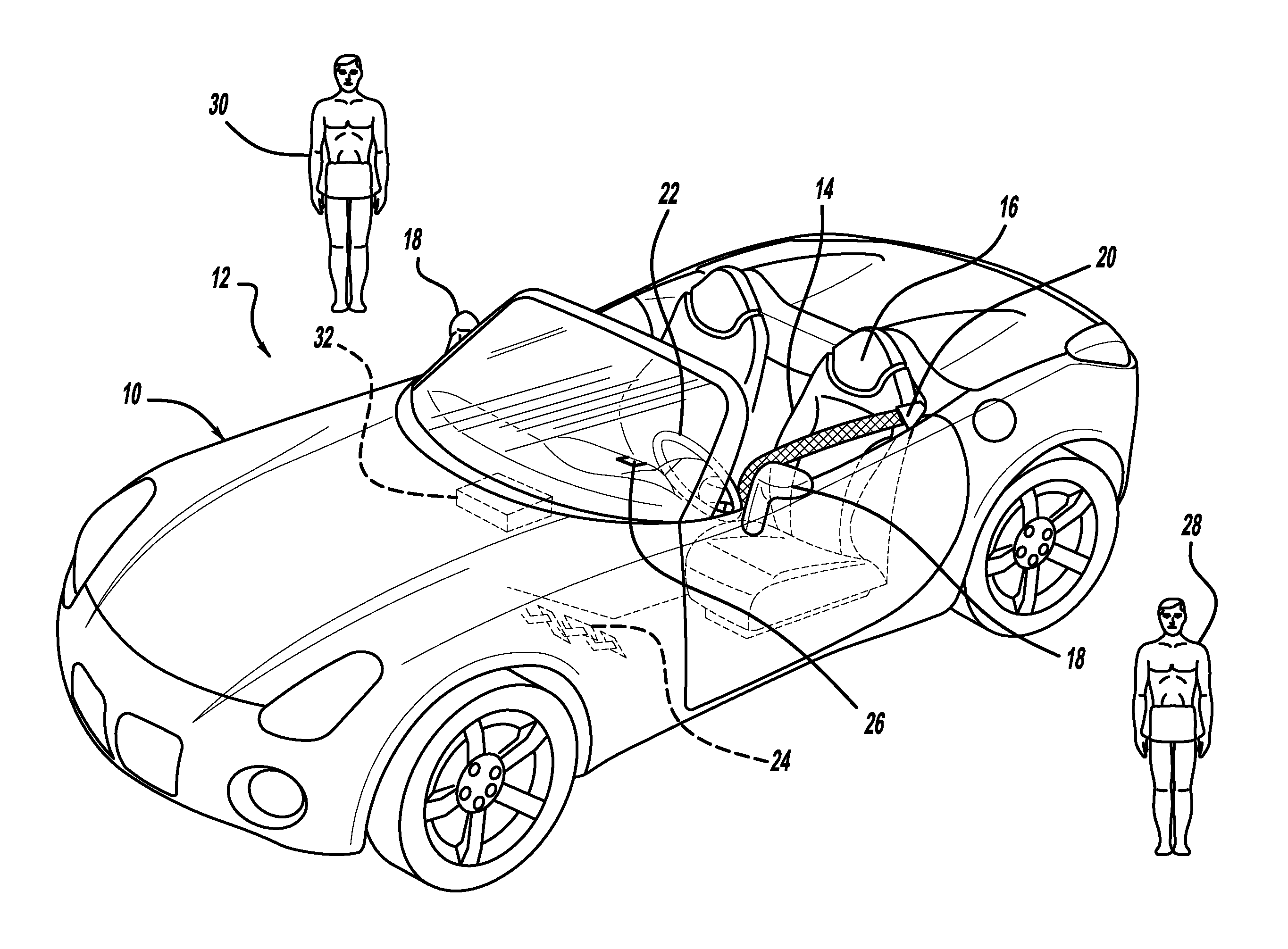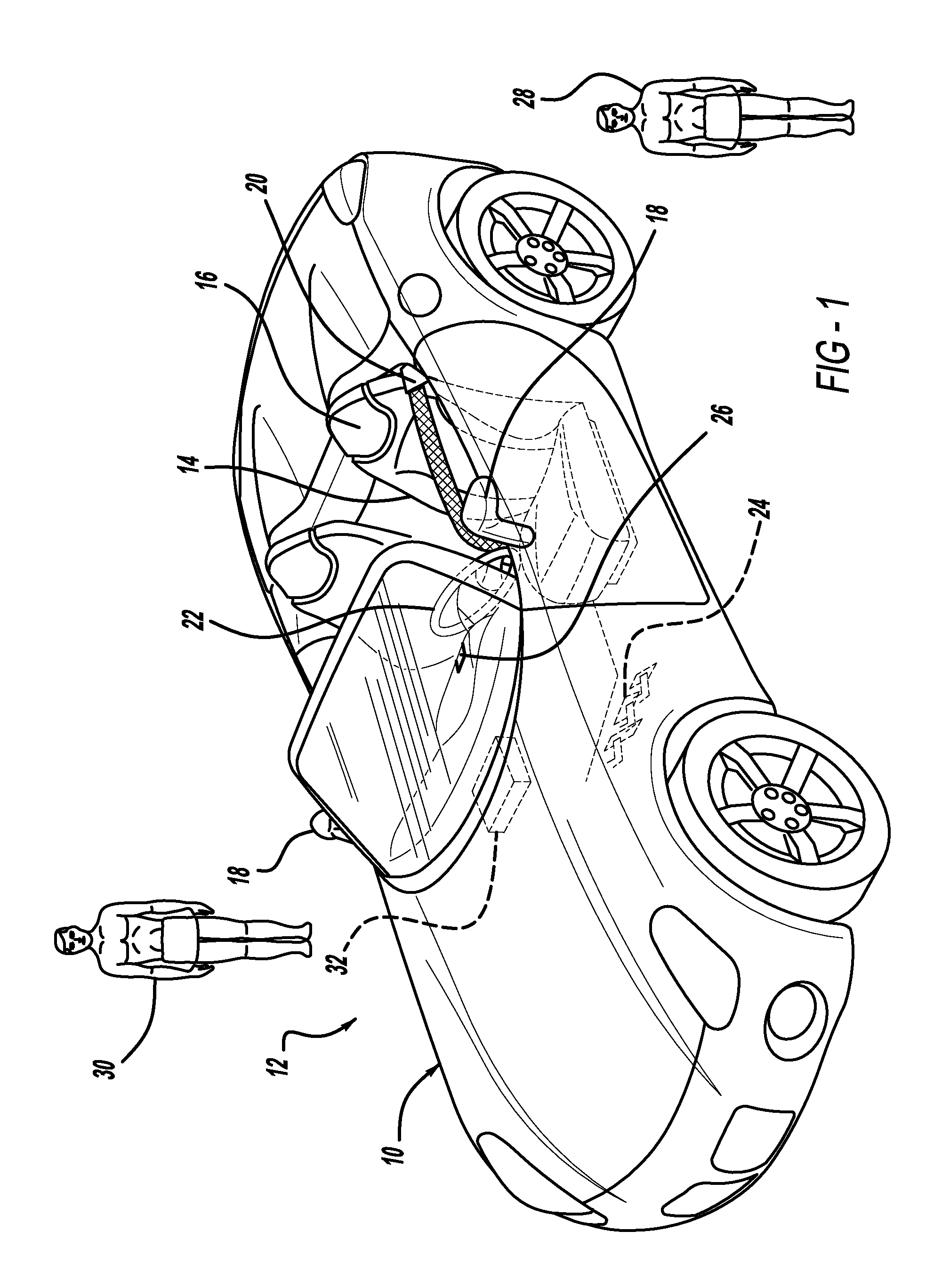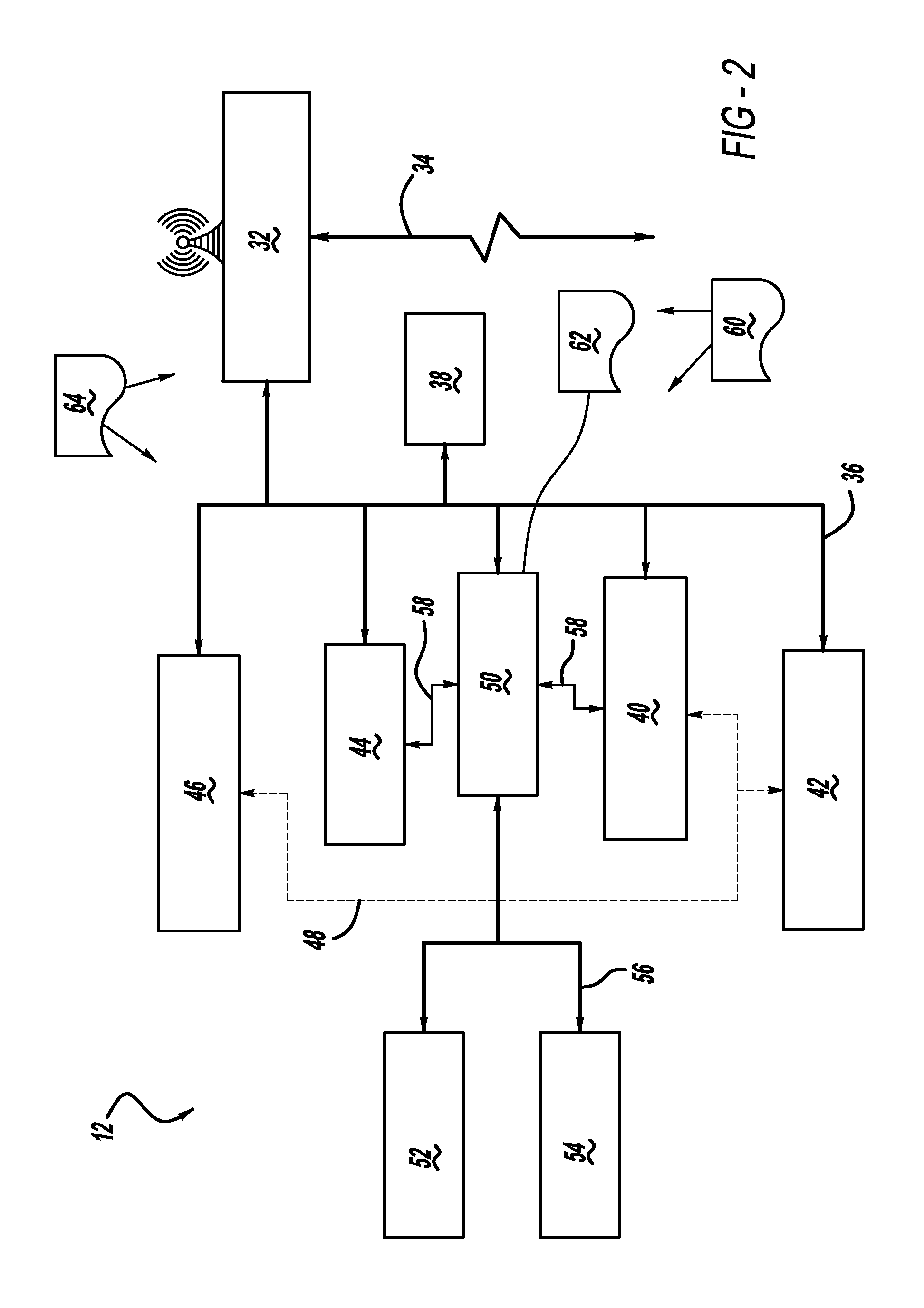Occupant recognition and verification system
a recognition and verification system technology, applied in the field of vehicle occupant recognition and verification system, can solve the problems of not being able to verify systems known in the art, unable to restore cockpit configuration to settings, and existing systems also being unable to anticipate optimal settings
- Summary
- Abstract
- Description
- Claims
- Application Information
AI Technical Summary
Problems solved by technology
Method used
Image
Examples
first embodiment
[0024]In the occupant recognition and verification system 12, the identification and adjustment algorithm 60 resides in the wireless module 32. The identification and adjustment algorithm 60 uses remote keyless entry key fob information, along with seat position, occupant weight, and other data, to attempt to verify the identity of the driver 28 and / or the front seat passenger 30. If identity is verified, then the identification and adjustment algorithm 60 commands the adjustment of components, such as the driver seat 14, the headrest 16, the outside rearview mirrors 18, the shoulder belt height adjuster 20, the steering wheel and column 22, and the pedals 24, to optimum position.
[0025]In the first embodiment, the wireless module 32 receives data, such as remote keyless entry key fob data from the body controller 38 and seat position data from the driver seat module 40, via the serial bus 36. After receiving input data via the serial bus 36 and wirelessly from the telematics service...
third embodiment
[0029]the occupant recognition and verification system 12 is also possible in which occupant profile data is not downloaded from the telematics service to the vehicle 10 via the wireless module 32. Instead, occupant profile data is communicated directly from the driver 28 and / or the front seat passenger 30 to the vehicle 10. For example, the driver's profile data could be wirelessly transmitted from a smart card or smart phone device (not shown) in the possession of the driver 28. The transmission could be via Bluetooth, or Near Field Communication (NFC), or some other protocol. In the case of Bluetooth communication, the profile data could be received by the body controller 38, while in the case of NFC, an NFC reader / writer could be embedded in the door or some other location in the vehicle 10. Even if the driver 28 and / or the front seat passenger 30 provide profile data directly to the vehicle 10, by way of a smart card or smart phone device or other means, verification of occupan...
PUM
 Login to View More
Login to View More Abstract
Description
Claims
Application Information
 Login to View More
Login to View More - R&D
- Intellectual Property
- Life Sciences
- Materials
- Tech Scout
- Unparalleled Data Quality
- Higher Quality Content
- 60% Fewer Hallucinations
Browse by: Latest US Patents, China's latest patents, Technical Efficacy Thesaurus, Application Domain, Technology Topic, Popular Technical Reports.
© 2025 PatSnap. All rights reserved.Legal|Privacy policy|Modern Slavery Act Transparency Statement|Sitemap|About US| Contact US: help@patsnap.com



